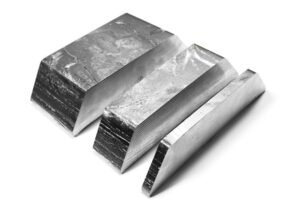Zinc Ingot Manufacturing Plant Setup: Cost Breakdown and Machinery Requirements
Zinc ingots are semi-finished metal products that are widely used across numerous industries including construction, galvanization, automotive, electronics, and chemical manufacturing. Known for their anti-corrosive properties, zinc ingots are a critical raw material in the production of galvanized steel, die-casting alloys, and various zinc-based compounds. As infrastructure development and manufacturing sectors continue to expand, the demand for zinc ingots is steadily rising, making it a lucrative opportunity for investment in the metals sector.
Setting Up a Zinc Ingot Manufacturing Plant
The establishment of a zinc ingot manufacturing plant involves several strategic and technical considerations. The core process typically includes the extraction of zinc from ores or scrap materials, followed by purification, melting, and casting the metal into ingots. A successful setup requires careful site selection, procurement of appropriate technology, and adherence to environmental and safety regulations. From raw material handling to final product packaging, the plant must be equipped to operate efficiently and meet market standards.
A zinc ingot plant setup can either focus on primary zinc production (using zinc ore as feedstock) or secondary zinc production (using zinc scrap and residues). While the former involves mining and beneficiation processes, the latter is gaining popularity due to its cost-effectiveness and environmental benefits.
Zinc Ingot Manufacturing Process Overview
The zinc ingot production process is typically divided into the following key stages:
-
Raw Material Sourcing: Zinc ores (such as sphalerite) or zinc-containing scrap materials are sourced and transported to the plant. The purity and quality of input materials directly affect the final output.
-
Roasting and Leaching: In the case of primary zinc production, the ore is roasted to convert zinc sulfide to zinc oxide. This is followed by leaching, where sulfuric acid is used to dissolve the oxide, creating a zinc sulfate solution.
-
Purification: Impurities such as iron, copper, and cadmium are removed from the solution using chemical precipitation or solvent extraction techniques.
-
Electrolysis: The purified solution undergoes electrolysis where electric current helps in depositing pure zinc on cathode plates. This is a key stage to ensure the quality of zinc ingots.
-
Melting and Casting: The deposited zinc is melted in furnaces and poured into molds to form ingots. These are then cooled, demolded, and trimmed to ensure uniform shape and size.
-
Finishing and Packaging: Ingots are inspected for quality, marked for identification, and packaged for storage or dispatch.
Key Components of a Zinc Ingot Manufacturing Business Plan
Developing a robust business plan is crucial for securing investment and ensuring smooth operations. Key components include:
-
Executive Summary: A concise overview of the business concept, objectives, and target market.
-
Market Analysis: Assessment of current demand, growth trends, competitor analysis, and pricing dynamics.
-
Operational Strategy: Description of the production process, technology to be used, sourcing strategy for raw materials, and distribution channels.
-
Marketing and Sales Plan: Strategies to reach customers, branding approach, and partnership development.
-
Management Structure: Details about the organizational hierarchy, team capabilities, and responsibilities.
-
Financial Projections: Forecast of operating income, profitability, and break-even analysis.
-
Risk Assessment: Identification of potential challenges and mitigation plans.
-
Regulatory Compliance: Overview of environmental, safety, and zoning regulations relevant to zinc processing.
Capital Investment Overview
Capital investment for a zinc ingot manufacturing plant can be broadly divided into fixed and working capital components. Fixed capital includes expenses related to land acquisition or lease, construction of plant infrastructure, purchase of machinery and equipment, and installation. Working capital covers operational costs such as raw material procurement, labor, utilities, maintenance, and logistics.
While determining the Zinc Ingot Manufacturing Plant Cost, entrepreneurs must also consider expenses related to technology integration, automation, quality control systems, and environmental compliance. Additionally, provisions for training manpower, R&D activities, and marketing efforts must be accounted for in the initial capital planning.
Machinery and Equipment Requirements
Efficient zinc ingot manufacturing demands specialized equipment designed for high-temperature and high-purity operations. Common machinery includes:
-
Crushing and Screening Units: To process ores or scrap.
-
Roasting Furnaces: For thermal conversion of zinc sulfide to oxide.
-
Leaching Tanks and Reactors: To dissolve zinc from the oxide.
-
Filter Presses and Clarifiers: For purification of the zinc solution.
-
Electrolytic Cells and Rectifiers: For zinc extraction via electrolysis.
-
Melting Furnaces and Casting Molds: To form ingots.
-
Cooling Systems and Conveyors: For handling and moving molten or solid zinc.
-
Weighing, Marking, and Packing Machines: For the final product line.
Choosing energy-efficient, automated equipment ensures optimal productivity and cost control.
Operating Costs and Ongoing Expenses
Operating costs are recurring expenditures that keep the zinc ingot plant functioning. These include:
-
Raw Material Costs: The largest share of operational expenditure; varies with market rates.
-
Energy Consumption: Power usage for furnaces, electrolyzers, and machinery.
-
Labor Wages: Salaries for skilled technicians, plant operators, and administrative staff.
-
Maintenance and Repairs: Upkeep of machinery, safety equipment, and infrastructure.
-
Utility Services: Water supply, fuel, waste treatment, and ventilation.
-
Packaging and Logistics: Costs for product handling, transportation, and distribution.
-
Compliance and Licensing: Expenses related to audits, certifications, and environmental management.
Managing these costs effectively is essential for maintaining profitability and competitiveness.
Conclusion
The zinc ingot manufacturing industry presents a strong investment opportunity in today’s evolving industrial landscape. With consistent demand from multiple downstream sectors, a well-planned zinc ingot plant can achieve long-term viability. Success lies in understanding the complete process chain, making informed decisions about capital and equipment, and continuously optimizing operations. A carefully crafted business plan and accurate estimation of the zinc ingot manufacturing plant cost can pave the way for sustainable growth and a competitive edge in the metals market.
